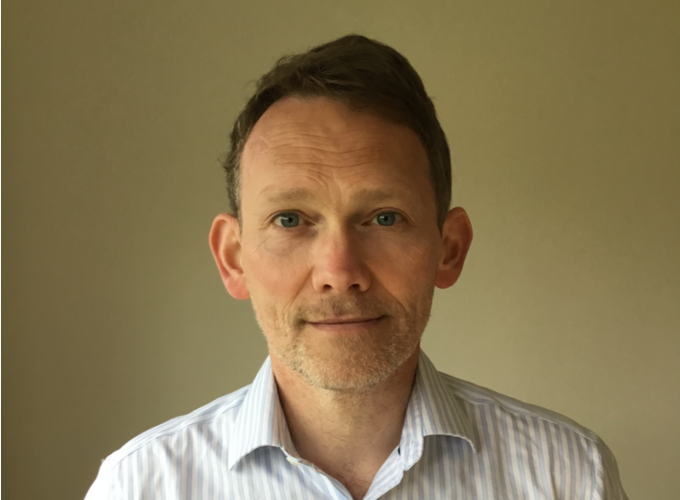The pros and cons of the Chief Project Officer role

Anyone planning a Christmas get together of chief project officers (CPOs) will have to do a lot of clicking and squinting on LinkedIn to find enough people to fill the dancefloor.
The CPO isn’t quite in ‘needle in a haystack’ territory, but it is fair to say that there aren’t too many dedicated C-suite parking spaces reserved for them around the world.
That, however, could be changing in a post-pandemic environment where economies are slowing and successful projects have become even more crucial in helping organisations and nations compete.
“Current events such as the COVID-19 pandemic and recent economic decline have caused massive disruptions globally. Organisational success depends on close alignment between strategic business goals and project, programme and portfolio delivery to realise them. It all hinges on new projects, as opposed to concentrating on business as usual,” says Dr David Jones, Programme Delivery Expert at PA Consulting.
“A CPO can navigate project, programme and portfolio management direction to ensure this alignment.”
In the sweet spot
Reporting directly to the CEO, the CPO, adds Dr Jones, spots and corrects broken projects and has the authority and gravitas to make the necessary changes.
“A CPO sits in the sweet spot, bridging the gap between business goals and projects,” he says. “You would still have individual sponsors for projects and a PMO, but the CPO would bring a more executive mindset in areas such as emotional intelligence and change management, as well as knowledge of 3PM and other implementations such as agile. They help improve performance and project management culture throughout an organisation.”
He accepts that the CPO role isn’t very common at the moment and that many organisations will say they have thrived without one. But he stresses that times are changing and organisations need to be more proactive.
“You could argue that during the pandemic many CEOs became CPOs as they identified and prioritised the best projects to ensure business survival. As organisations build increasingly complex portfolios, the C-level needs a person to take organisational strategies and implement them, providing feedback on the feasibility, planning and complexity of projects, programmes and portfolios designed to deliver strategies,” he says.
Redundancy, waste and strategic drift
Project management expert Antonio Nieto-Rodriguez also championed CPOs in a recent Harvard Business Review article.
“Most organizations still don’t have one senior leader overseeing all the project activities in an organization, as we had with the chief operating officer,” he wrote. “Imagine if the manufacturing of electric cars had the sourcing of the components, the assembly and testing of the cars all answering to a different executive sponsor rather than a single COO. Redundancy, waste, and strategic drift would be rampant. Yet that’s how many organizations still run their projects.”
Nieto-Rodriguez believes that the primary responsibilities of a CPO are to drive major strategic projects in the organisation, streamline the project portfolio to accelerate growth and value creation, and deliver on sustainability and diversity.
That’s the theory then, but what of the practice?
Aimee Churchill was appointed to the new role of CPO of Canadian advertising agency Point Blank Creative six months ago.
“In addition to managing a team of project managers, coordinators and our creative resources director, I have a large focus on the overall company and project workflow experience around internal teams, resourcing and profitability,” she says.
“I have more accountabilities to the senior leadership team than in a PMO. My targets/KPIs range from increased project profitability, workflow efficiencies, project team experience, client experience, capacity mapping and resourcing, and sales. Is it worth it, do we have capacity for it?”
She reports directly to the CEO, meeting bi-weekly one on one.
“I feel the CPO role helps the C-suite understand and be more involved in company projects,” she says. “I have a better high-level view of how we are performing, where we have gaps, where we need to hire versus train and most importantly forecasting, so we can see any workflow or capacity issues before they become a bottleneck.”
There are downsides, however
“I'm no longer managing client projects myself. I have a large team and feel a bit removed from what they are experiencing day-to-day outside of what they tell me,” Churchill says.
Programme Manager Ian Koenig has more general concerns around the role.
“A new corporate team position would need to be more than a role description, clearly defining the legal accountabilities and responsibilities. It would have to identify how this would not overlap with current legal accountabilities,” he says.
“The generally poor performance of project management frustrates the C-suite, so we need to talk their language and harness their powers. Project and programme managers tend to rely on the sponsor or project executive to engage with the corporate team. Experienced project practitioners understand when and how to leverage the C-suite. As such I believe it is not adding new entities on the C-suite which is needed but more effective use of project sponsors or programme executives.”
Dr Jones accepts that the overriding objective around CPOs is making the voice of project management heard more loudly in the boardroom.
“Perhaps the title isn’t that important. It is what happens at board level that really matters,” he says.
“Everyone is hastening to do things faster, cheaper and better, and the overall corporate project management capability is moving further into the spotlight. There is still a lot of hesitancy and uncertainty around the CPO position, and it will take between five and 10 years before it is more widely accepted as a role.
“But for those global, multi-disciplined, enterprise-oriented companies that require complex projects for profit, it could be an answer.”
Read more about The Chief Project Officer - An Essential Part of the Future C-Suite here


0 comments
Log in to post a comment, or create an account if you don't have one already.